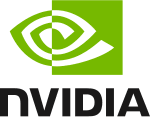英伟达公司 (NVDA.US) 2026财年第二季度业绩电话会
文章语言:
简
繁
EN
Share
Minutes
原文
会议摘要
NVIDIA achieved record $46.7 billion revenue, driven by 56% YoY data center growth and 17% sequential Blackwell revenue increase. The company forecasts $3-4 trillion AI infrastructure market by decade's end, with Rubin and GB 300 platforms leading advancements. Despite geopolitical challenges, NVIDIA anticipates $2-5 billion shipments to China, highlighting global market potential. Spectrum X Ethernet and AGX Orin robotics platform saw significant growth, underscoring NVIDIA's comprehensive strategy in AI and robotics.
会议速览
The meeting welcomed the financial report of NVIDIA for the second quarter of the fiscal year 2026, discussing future financial forecasts and non-GAAP financial indicators, while emphasizing the risks and uncertainties of forward-looking statements, as well as compliance with financial reporting requirements and disclosure obligations.
NVIDIA's revenue in the second quarter reached $46.7 billion, a year-on-year increase of 56%. The Blackwell platform has performed outstandingly, leading the AI infrastructure market. The company expects AI infrastructure investments to reach $3-4 trillion in the next decade. New products such as GB 300 are accelerating the construction of global data centers, while also facing geopolitical challenges, but continue to drive the establishment of global AI technology standards.
NVIDIA's Spectrum X enhanced Ethernet solution provides the highest throughput and lowest latency in AI workloads, achieving double-digit quarterly and annual growth rates. InfiniBand revenue almost doubled, benefiting from the adoption of XDR technology, significantly increasing bandwidth. NVIDIA's NVLink technology has doubled the speed of communication between GPUs, and its robotics computing platform NVIDIA AGX Orin provides higher artificial intelligence performance and efficiency. The NVIDIA Omniverse platform is driving AI development in automated factories, collaborating with multiple European robotics companies to accelerate the development of robotic systems.
NVIDIA's gaming business revenue reached 4.3 billion US dollars, a year-on-year increase of 49%, benefiting from strong sales of the Blackwell GPU. The company launched the RTX 5060, improving performance and AI capabilities, and plans to upgrade GeForce Now to the level of RTX 5080 in September. In terms of AI applications, NVIDIA collaborated with OpenAI to optimize the GPT model, professional visualization revenue increased by 32%, and automotive computing revenue surged by 69%, thanks to the introduction of the NVIDIA Thor SOC. The company continues to invest in growth, repurchasing stocks and distributing cash dividends totaling 10 billion US dollars in the second quarter, with the board of directors approving an additional 60 billion US dollars for repurchasing authorization.
Looking ahead to the third quarter of the 2026 fiscal year, it is expected that total revenue will reach 54 billion, with significant growth, not including shipments from H20 Chinese customers. Emphasis is placed on AI, especially breakthroughs in reasoning and agent AI, driving growth in data centers and networks. The Blackwell MV Link 72 system increases computing efficiency, with plans to expand into the 3-4 trillion US dollar AI infrastructure market over the next five years, in response to industry changes.
Discussed sustainable growth strategies for the Chinese business in the fourth quarter, as well as the competitive environment facing ASIC projects and AI market trends. Emphasized strengths in the complex accelerated computing field, including platform versatility, architectural adaptability, and system-level solutions, to maintain market leadership.
The dialogue emphasized the technical complexity required to build high-performance AI platforms, including the integration of efficient GPUs, CPUs, memory systems, and network architectures, aimed at achieving large-scale AI computing. NVIDIA, with its advantages in energy efficiency, performance, and cost-effectiveness, has become the preferred choice for cloud service providers and startups. Its solutions cover the full stack from chips to AI super factories, demonstrating strong market competitiveness and growth potential.
The conversation revolved around the huge investments in data center infrastructure in the next ten years, mentioning that investment scale will soar from billions to three to four trillion US dollars. It focused on analyzing the driving role of the AI revolution on capital expenditure, as well as NVIDIA's industry contribution as an AI infrastructure provider. The discussion emphasized potential bottlenecks such as power supply, as well as the strategic importance of improving efficiency and reducing costs through performance enhancements.
The dialogue discussed NVIDIA's long-term development prospects in the Chinese market, especially the importance of black box architecture authorization. It is expected that the AI software market in China will reach $50 billion this year with an annual growth rate of about 50%. China has approximately 50% of the world's AI researchers and numerous leading open source models, which have a significant impact on global AI applications. Open source models promote the custom development of AI systems for global enterprises, which is particularly critical in the SaaS and robotics fields. American companies need to maintain their competitiveness in the Chinese market in order to drive American technology stack to become the global standard. H20 has been approved by some enterprises, and the entry of black box architecture into the Chinese market is possible, but it is necessary to continue to promote the rationality and importance of relevant policies.
The conversation focuses on the market potential of Spectrum XGS, discusses its applications in data transmission and networking layers, as well as the possibility of achieving a $10 billion annual revenue scale in the Ethernet product line, evaluating its market opportunities and growth prospects.
Three types of network technologies were discussed, including NVLink and InfiniBand for scaling out, emphasizing the revolutionary role of NVLink 72 in building large virtual GPUs and the low latency advantage of InfiniBand in supercomputing and model development.
The dialogue discussed the importance of network technology in AI factories, especially the low latency and low jitter characteristics of Infiniband and the new Spectrum Ethernet (including Spectrum X and XGS), and their significant contribution to efficiency improvement. It was pointed out that the correct network selection can significantly enhance factory performance, bringing billions of dollars in benefits, emphasizing NVIDIA's investment and achievements in this field.
Discussed the contributions of Blackwell and Hopper to the growth in data center revenue, as well as the synergistic effects of networking equipment, emphasizing that Blackwell will continue to lead the growth, while Hopper and networking equipment will maintain stable sales.
Discussed the impact of performance improvements in AI on the efficiency of data centers, emphasizing the annual cycle of product upgrades, and how increasing performance per watt and reducing costs can increase customer revenue and profit margins. Looking ahead, AI capabilities and the economic benefits of data centers will be further enhanced through continuous technological innovation and architectural optimization.
The discussion explored a 50% compound annual growth rate in the AI market, as well as the impact on the growth of data center revenue. It mentioned a significant increase in funding for AI-native startups, as well as the high interest and demand for AI from large enterprises, SaaS, and industrial AI. It emphasized the crucial role of Blackstone and Rubin platforms in AI factory construction, as well as the extensive prospects for the future application of AI technology in enterprise services, industrial automation, and robotics.
要点回答
Q:What are the highlights of Nvidia's second quarter fiscal 2026 financial results?
A:Nvidia delivered another record quarter with total revenue of $46.7 billion, exceeding their outlook. Sequential growth was seen across all market platforms, with Data Center revenue growing 56% year over year and also improving sequentially despite a decline in H20 revenue.
Q:What are the details regarding the GB 300?
A:Nvidia began production shipments of the GB 300 in Q2, which is a full stack AI solution for cloud service providers, Neo Clouds, enterprises, and sovereigns. The transition to the GB 300 has been seamless, with major cloud service providers being able to build and deploy GB 300 racks easily due to shared architecture, software, and physical footprint with the GB 200.
Q:What is the projected growth opportunity for Nvidia in AI infrastructure spend?
A:Nvidia sees 3 to $4 trillion in AI infrastructure spend by the end of the decade, presenting significant long-term growth opportunities.
Q:What are the details regarding the H 200 NBL system?
A:The H 200 NBL system is seeing widespread adoption, with deployments at Cloud Service Providers (CSP) and consumer internet companies. Lighthouse model builders like OpenAI, Meta, and Straws are using the H 200 NBL 72 at data center scale for both training next-generation models and serving inference models in production.
Q:What is the expected timeline for the GB 300 ramp-up and market availability?
A:Factory builds in late July and early August successfully converted to support the GB 300 ramp, and full production is underway. The current run rate is back at full speed, producing approximately 1000 racks per week. Market availability is expected to accelerate throughout the third quarter as additional capacity comes online, with widespread market availability anticipated in the second half of the year.
Q:What are the implications of the U.S. government's licensing review for Nvidia's H 20 sales to China?
A:The U.S. government is reviewing licenses for sales of H 20 to Chinese customers. To date, no H 20 sales have been shipped based on received licenses. There is an expectation that 15% of the revenue from licensed H 20 sales will go to the U.S. government, but no regulation has been published codifying this requirement yet. H 20 has not been included in Nvidia's Q3 outlook due to ongoing geopolitical issues. If these issues are resolved, Nvidia could see 2 to $5 billion in H 20 revenue in Q3.
Q:What is the significance of the sequential increase in Hopper demand?
A:The sequential increase in Hopper demand indicates the breadth of data center workloads that run on accelerated computing and the performance and economic value of Nvidia's platform, as continuous innovation and delivery of both Hopper and Blackboard GPUs focus on meeting global demand.
Q:How is Nvidia's software innovation and the developer ecosystem contributing to performance improvements?
A:Nvidia's software innovation, combined with the strength of its developer ecosystem, has improved Blackwell's performance by more than 2x since its launch. This is due to advances in CUDA, TensorRT, and Dynamo, along with contributions from the open source community, all of which are integrated into millions of workflows. This collaborative innovation strengthens Nvidia's performance leadership.
Q:What are the performance gains of Blackwell's numerical approach to large language model pre training?
A:Blackwell's approach using NV FP 4 computations on the GB 300 can achieve 7x faster training than the H-100 with FP 8, and it matches the accuracy of 16 b precision with the speed of 4 b, setting a new standard for AI efficiency and scalability.
Q:Which companies are integrating Nvidia's RTX Pro servers and for what purposes?
A:Nearly 90 companies, including global leaders like Hitachi for real-time simulation and digital twins, Lily for drug discovery, Hyundai for factory design and AV validation, and Disney for immersive storytelling, are already adopting Nvidia's RTX Pro servers.
Q:What is the significance of Sovereign AI for Nvidia and what initiatives are they involved in?
A:Sovereign AI is rising as countries develop their own AI using domestic infrastructure and talent, presenting a significant opportunity for Nvidia. They are at the forefront of initiatives in the UK and Europe, such as the European Union's investment in establishing AI factories and the UK's unveiling of an AI supercomputer powered by Nvidia to accelerate breakthroughs in drug discovery and climate modeling.
Q:How much is Nvidia's projected revenue from sovereign AI for this year?
A:Nvidia is on track to achieve over 20 billion in sovereign AI revenue for the year, which is more than double the revenue of the previous year.
Q:What advancements in networking solutions have been announced by Nvidia?
A:Networking delivered record revenue of 7.3 billion with strong demand for high efficiency and low latency networking solutions like Spectrum X Ethernet, Infiniband, and Spectrum X enhanced Ethernet, which provide the highest throughput and lowest latency for AI workloads.
Q:What are the benefits of Nvidia's new robotics computing platform?
A:Nvidia's new robotics computing platform offers an order of magnitude greater AI performance and energy efficiency, running the latest generative and reasoning AI models at the edge in real-time, and it has been adopted by leading enterprises across industries for their robotic applications.
Q:What impact has the US-China relations had on Nvidia's revenue from China?
A:Due to US-China relations, China's data center revenue declined on a sequential basis to low single digits percentage of total data center revenue, and the Q3 outlook does not include H20 shipments to China customers.
Q:What are the highlights of Nvidia's gaming revenue and product launches?
A:Gaming revenue was a record 4.3 billion, driven by the ramp of Blackwell GPUs with continued strong sales and supply availability. This quarter, Nvidia launched the GeForce RTX 5060 desktop GPU, and Blackwell is coming to GeForce Now in September with significant upgrades for cloud gaming.
Q:How is the RTX platform contributing to professional visualization and AI applications?
A:The professional visualization revenue reached 601 million, a 32% year-on-year increase, primarily driven by the adoption of high-end RTX workstation GPUs and AI-powered workloads like design, simulation, and prototyping.
Q:What are the recent trends in the automotive revenue for Nvidia?
A:Automotive revenue, which includes only in-car compute revenue, was 586 million, up 69% year-on-year, primarily driven by self-driving solutions, and the start of shipments of Nvidia Thor SOC.
Q:What were the financial results mentioned by Nvidia in the transcript?
A:Nvidia's non-GAAP gross margins were 72.4% and 72.7% including and excluding a 180 million benefit from inventory release, respectively. Operating expenses rose 8% and 6% sequentially. Additionally, they returned 10 billion to shareholders through share repurchases and cash dividends, and the board approved a 60 billion share repurchase authorization.
Q:What are the expected non-GAAP and GAAP other income and expenses, and tax rates?
A:The expected non-GAAP other income and expenses are an income of approximately $500 million, excluding gains and losses from non-profitable and public held equity securities. The expected GAAP and non-GAAP tax rates are 16.5%, plus or -1%, excluding any discrete items.
Q:What upcoming events are scheduled for the financial community?
A:Upcoming events include the Goldman Sachs Technology Conference on September 8 in San Francisco, the annual NDR event in October, and the earnings call to discuss the results of the third quarter of fiscal 2026, which is scheduled for November.
Q:What is the vision for growth into 2026, particularly in networking and data centers?
A:The vision for growth into 2026 includes the evolution of reasoning agentic AI, where AI does research, thinks, plans, and uses tools, which could be 100 times or more the computation of traditional AI models. This is expected to revolutionize enterprises and open up new possibilities in networking and data centers.
Q:What breakthroughs have been made with the Blackwell M V Link 72 system?
A:The breakthrough with the Blackwell M V Link 72 system is that it is a scale computing system, where each rack is a computer, which allows for extraordinary improvements in speed and energy efficiency, and cost-effectiveness of token generation.
Q:What is the current status of CapEx growth in the top 4 CSPs and how is AI technology impacting different industries?
A:The CapEx has grown in the top 4 CSPs by doubling and reaching about $600 billion. AI technology has enabled AI to be adopted and solve problems across various industries.
Q:What is the competitive landscape regarding ASIC projects and the potential shift away from Nvidia's GPUs?
A:There is a competitive landscape with several large customers planning or having ASIC projects, and one competitor, Broadcom, signaling a potential 55-60% growth in their AI business next year. The company is observing the market's movement towards ASICs and away from Nvidia GPUs, and is listening to its customers' strategies for managing the split between using merchant silicon and ASICs.
Q:What are the advantages of using Nvidia's platform for building and deploying AI models?
A:The advantages of using Nvidia's platform include the ability to evolve into any architecture, being available everywhere from cloud to on-prem Edge to robotics, and accelerating the entire pipeline from data processing to pre-training to post-training with reinforcement learning to inference.
Q:What complexities are involved in building AI platforms like Blackwell and Ruben?
A:The complexities involved in building AI platforms include developing CPUs that connect fast memory, extremely energy-efficient memory for large KByte caching, developing revolutionary scale-up and scale-out switches, and preparing for AI super factories with multiple gigawatts of computing power.
Q:How does Nvidia's platform contribute to data centers and what are the financial implications?
A:Nvidia's platform contributes to data centers by being the most energy-efficient per watt and offering the best performance per dollar, resulting in high margins. It's chosen by every cloud, startup, and computer company for its holistic full-stack solution for AI factories.
Q:What are the projected data center infrastructure spends by the end of the decade, and what is Nvidia's share of that?
A:The projected data center infrastructure spend by the end of the decade is $3 to $4 trillion, with Nvidia's share being very high in compute spend. Nvidia's contribution is estimated to be around 35% to 40% of this total, based on the CapEx of the top 4 hyperscalers doubling in two years and the rest of the enterprise companies and cloud service providers building on-prem and around the world.
Q:How important is it for Nvidia to license its Blackwell architecture in the China market?
A:It is very important for Nvidia to license its Blackwell architecture in the China market, which is estimated to be about $50 billion in opportunity for Nvidia this year, growing at the same rate as the rest of the world's AI market. China is also the home of AI researchers and the birthplace of many open source models used globally. American technology companies need to address this market to stay competitive.
Q:What is the potential for American tech companies in the Chinese market and the AI race?
A:The potential for American tech companies in the Chinese market is significant, with the possibility of leading and winning the AI race. Many licenses have been approved for H20 for companies not on the entities list, opening up the opportunity for companies like Blackwell to enter the Chinese market.
Q:What are the different networking technologies offered by the company?
A:The company offers three networking technologies: one for scale up, one for scale out, and one for scale across. These technologies include Infiniband, which is the lowest latency and best for scale out, and a new type of Ethernet called spectrum Ethernet that is designed for low latency, low jitter, congestion control, and is comparable to Infiniband. Additionally, there is spectrum xgs for connecting multiple data centers.
Q:How significant is networking in AI factories and what return on investment can be expected?
A:Networking is very important in AI factories, with the potential for significant performance improvements, such as a 20% to 30% increase in efficiency. Proper networking essentially makes it 'free' as it enhances the efficiency of the AI factory, which can be worth billions, resulting in cost savings in the tens of billions.
Q:What is the projected growth for Blackwell and Hopper in the upcoming cycle?
A:Blackwell is projected to remain the major driver of growth in the data center segment, with Hopper also contributing. The growth is expected to continue with Blackwell and Hopper systems being sold, and the revenue from these systems is anticipated to be a significant portion of the growth.
Q:What are the performance and capability improvements expected with the new products?
A:The new products, including Rubin, are expected to offer significant performance and capability improvements. The performance per dollar is anticipated to improve, leading to better gross margins for customers. Rubin is positioned to bring substantial new ideas, with a preview expected at GTC, and the company is ramping hard into Grace Blackwell GB 200 and Ultra GB 300 data centers.
Q:What percentage CAGR does the AI market have according to Jensen?
A:Jensen mentioned a 50% CAGR for the AI market.
Q:How much has AI funding increased from last year?
A:AI funding has increased significantly, from $100 billion last year to $180 billion this year, with the potential for much higher funding due to continued startup activity and AI native startups generating revenues.
Q:What is the current demand for AI capacity among startups and large companies?
A:The demand for AI capacity is extremely high, with H-100 and H-200 systems sold out and large cloud service providers (CSPs) renting capacity from other CSPs. AI native startups are struggling to get capacity to train their models, reflecting a very strong demand.
Q:What are the expectations for AI CapEx over the next few years?
A:It is expected that AI CapEx will continue to grow significantly, having doubled in two years to about $600 billion annually. This suggests that a substantial part of the CapEx could represent growth opportunities for the next several years and possibly through the decade.
Q:What is the status of the Blackwell and Rubin AI platforms?
A:Blackwell, the next generation AI platform, is ramping at full speed with an extraordinary demand. The next platform, Rubin, is already in fabrication, with 6 new chips representing the Rubin platform that will have a mature and fully scaled supply chain. These platforms are expected to scale into a $3 to $4 trillion global AI factory build-out through the end of the decade.
Q:What is the significance of Nvidia's recent record revenues?
A:Nvidia's recent record revenues signify the start of a new industrial revolution driven by AI, with an immense opportunity ahead as more companies build AI factories and infrastructure to support the ongoing AI revolution.

NVIDIA Corp.
Follow





